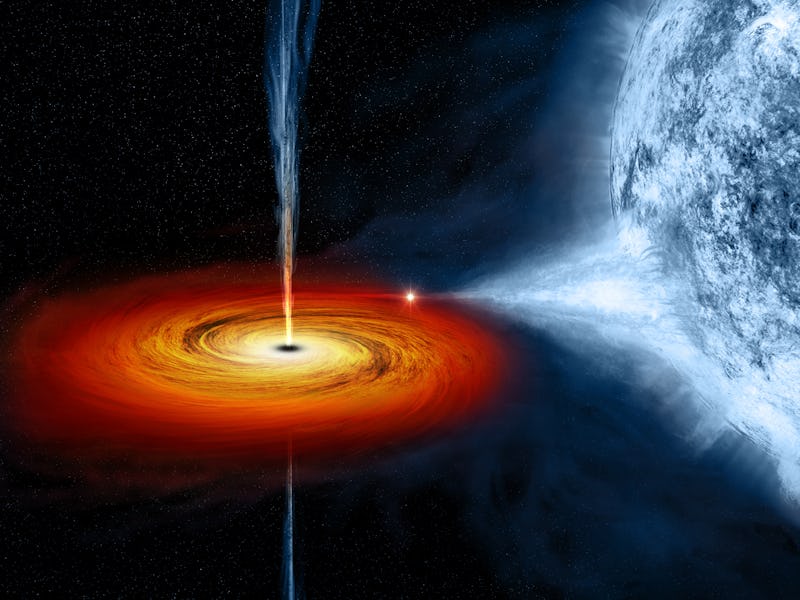2020 Nobel Physics Prize goes to the study of the most mysterious objects in the universe
The prize recipients helped change our view of the most mysterious cosmic beings in two fundamental ways.

Black holes are among the most fascinating objects in the universe — and perhaps the most difficult to study.
On Tuesday, the Royal Swedish Academy of Sciences announced the Nobel Prize in Physics 2020 went to physicist Roger Penrose, astrophysicist Reinhard Genzel, and astronomer Andrea Ghez. The three scientists were chosen for their pivotal contributions to the science of black holes.
Together, their work has fundamentally altered our understanding of black holes and how they fit into Einstein's theory of general relativity. Among the black holes they have taught us about most? The very one which sits at the center of our galaxy.
One half of the prize was awarded to Penrose for the discovery that black holes are a direct consequence of Einstein's theory of general relativity theory, and the other half was jointly awarded to Genzel and Ghez for their discovery of the supermassive black hole at the center of the Milky Way.
How they changed the science — Now, scientists know what a black hole looks like. But until the 1960s, it wasn't yet proven that they even existed. Then, in 1965, Roger Penrose essentially proved that black holes can exist. Using mathematical methods, he merged the theory of general relativity with quantum theory and proved that black holes can form.
For their parts, Genzel and Ghez discovered Sagittarius A*, the supermassive black hole at the center of our galaxy that is around 4 million times the mass of the Sun.
Observing the center of the Milky Way, they and their colleagues discovered that an invisible object was tugging at the surrounding stars, causing them to orbit around at high speeds.
They made this discovery in 1974, and it remains one of the most definitive proofs that a supermassive black hole lurks does indeed lurk at the center of the Milky Way.
“The discoveries of this year’s Laureates have broken new ground in the study of compact and supermassive objects," David Haviland, chair of the Nobel Committee for Physics, said in a statement. "But these exotic objects still pose many questions that beg for answers and motivate future research. Not only questions about their inner structure, but also questions about how to test our theory of gravity under the extreme conditions in the immediate vicinity of a black hole."
Ghez is only the fourth woman to win a Nobel physics prize.
“I hope I can inspire other young women into the field," Ghez said at a press conference on Tuesday. "It’s a field that has so many pleasures, and if you are passionate about the science, there’s so much that can be done.”
Last year's Nobel Prize in Physics also went to the field of cosmology, honoring Canadian-American cosmologist and physicist James Peebles for his work on a model of the universe, as well as the team of astrophysicists Michel Mayor and Didier Queloz of the University of Geneva for their work on hunting exoplanets.